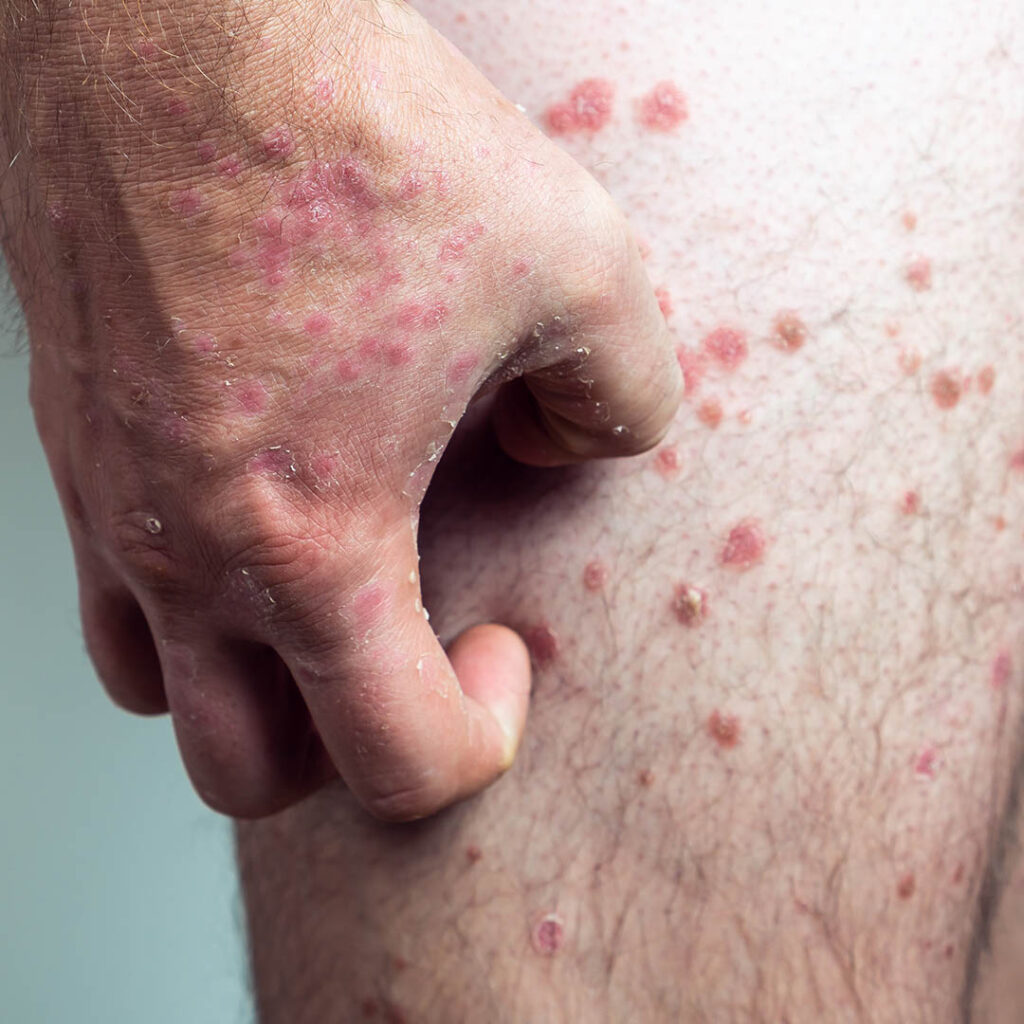Psoriasis & Psoriatic Arthritis

What is Psoriasis?
Psoriasis is a chronic skin condition characterized by red, scaly patches on the skin. The exact cause of psoriasis is unknown, but it is thought to involve an overactive immune system and genetics.
Symptoms of psoriasis can vary from person to person, but the most common signs include:
- Raised, red patches on the skin that may be covered with a silvery-white buildup of dead skin cells (scales)
- Itching or burning sensations in affected areas
- Dry, cracked skin that may bleed
- Thick, discolored nails
Treatment for psoriasis depends on the severity of the condition and the individual’s specific needs. Options may include topical creams and ointments, light therapy, and oral or injectable medications. In some cases, lifestyle changes such as stress management and avoiding triggers (such as certain foods or infections) may also help alleviate symptoms.
Why does psoriasis happen?
The exact cause of psoriasis is unknown, but it is thought to be related to an overactive immune system. In people with psoriasis, the immune system triggers an excessive amount of skin cell growth. Normally, skin cells grow and mature, then die and are replaced by new cells. But in people with psoriasis, the skin cells grow too quickly and accumulate on the surface of the skin, leading to the formation of red, scaly patches.
Several factors can trigger or worsen psoriasis, including:
- Stress
- Infections, such as streptococcal sore throat
- Certain medications, including lithium, high blood pressure medications, and anti-malarials
- Cold, dry weather
- Injuries to the skin, such as cuts, scrapes, and sunburns
- Alcohol consumption
- Smoking
It is important to note that although these factors can trigger or worsen psoriasis in some people, they may not have the same effect on everyone. Additionally, not everyone with psoriasis will have the same triggers.

Different Kinds of Psoriasis
There are several different types of psoriasis, each with its own distinct characteristics and symptoms. Some of the most common types of psoriasis include:
This is the most common type of psoriasis and is characterized by red, raised, and scaly patches (plaques) on the skin. The plaques are usually itchy and can be quite painful.
This type of psoriasis causes small, red, tear-drop shaped spots on the skin, typically on the trunk, arms, legs, and scalp. It is most common in children and young adults.
This type of psoriasis affects the skin in the folds of the body, such as the armpits, groin, and under the breasts. It appears as bright red, smooth, and shiny patches that are free of scales.
This type of psoriasis causes red, raised, and scaly skin, with small, white, pus-filled blisters. Pustular psoriasis can be widespread or limited to certain areas of the body, such as the palms and soles.
This is a rare but severe form of psoriasis that causes widespread redness and scaling of the skin, leading to intense itching and pain.
This type of psoriasis affects the nails and causes discoloration, thickening, and separation of the nail from the nail bed.



